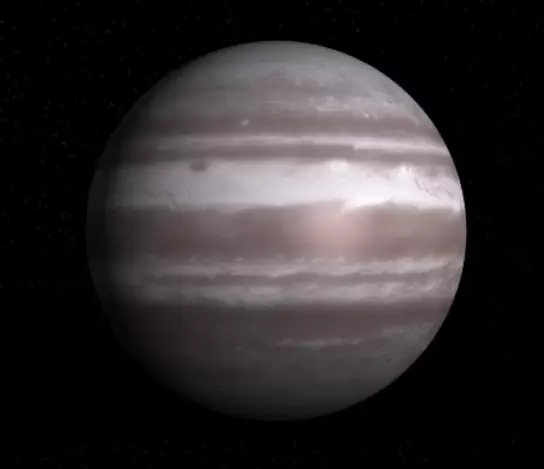
Scientists have observed a planet 640 light years away where it's so hot it rains scalding iron. I don't reckon I'll be paying a visit any time soon.
If molten iron rain isn't quite brutal enough, the planet - named Wasp-76b - also has 10,000mph winds and has temperatures of more than 2,400°C during the day, hot enough to vaporise metals.
At night the temperature drops by 1,000°C meaning the metals on the planet condense and rain out, the BBC reports.
Advert
Wasp-76b, which is twice as wide as Jupiter, was spotted by scientists from Switzerland who have recently published their findings in the academic journal Nature.

Dr David Ehrenreich from the University of Geneva, who led the study, told the BBC: "Imagine instead of a drizzle of water droplets, you have iron droplets splashing down." Sounds bloody awful, Doc.
The planet is so close to its nearest star it takes just 43 hours to complete a revolution - for comparison, it takes the Earth a whole year.
Advert
Researchers used the new Espresso instrument at the European Southern Observatory's Very Large Telescope in Chile to observe the giant gas planet.
The researchers identified the chemical variations between day and night on the planet and were able to detect traces of iron vapour as day turned to night.
Dr Ehernreich said: "However, surprisingly we do not see this iron vapour at dawn.
"The only explanation possible for this phenomenon is that it rains iron on the dark side of this exoplanet with extreme conditions."
Advert
He added: "What we surmise is that the iron is condensing on the nightside, which, although still hot at 1,400C, is cold enough that iron can condense as clouds, as rain, possibly as droplets. These could then fall into the deeper layers of the atmosphere which we can't access with our instrument."
Jonay I Gonzalez Hernandez, a researcher at the Instituto de Astrofisica de Canarias, Spain, said: "Just like the moon around the Earth, this planet always keeps the same face towards its star as it rotates around it.
"This causes this extreme difference in temperature between day and night on the planet."
Featured Image Credit: ESOTopics: Science, Interesting